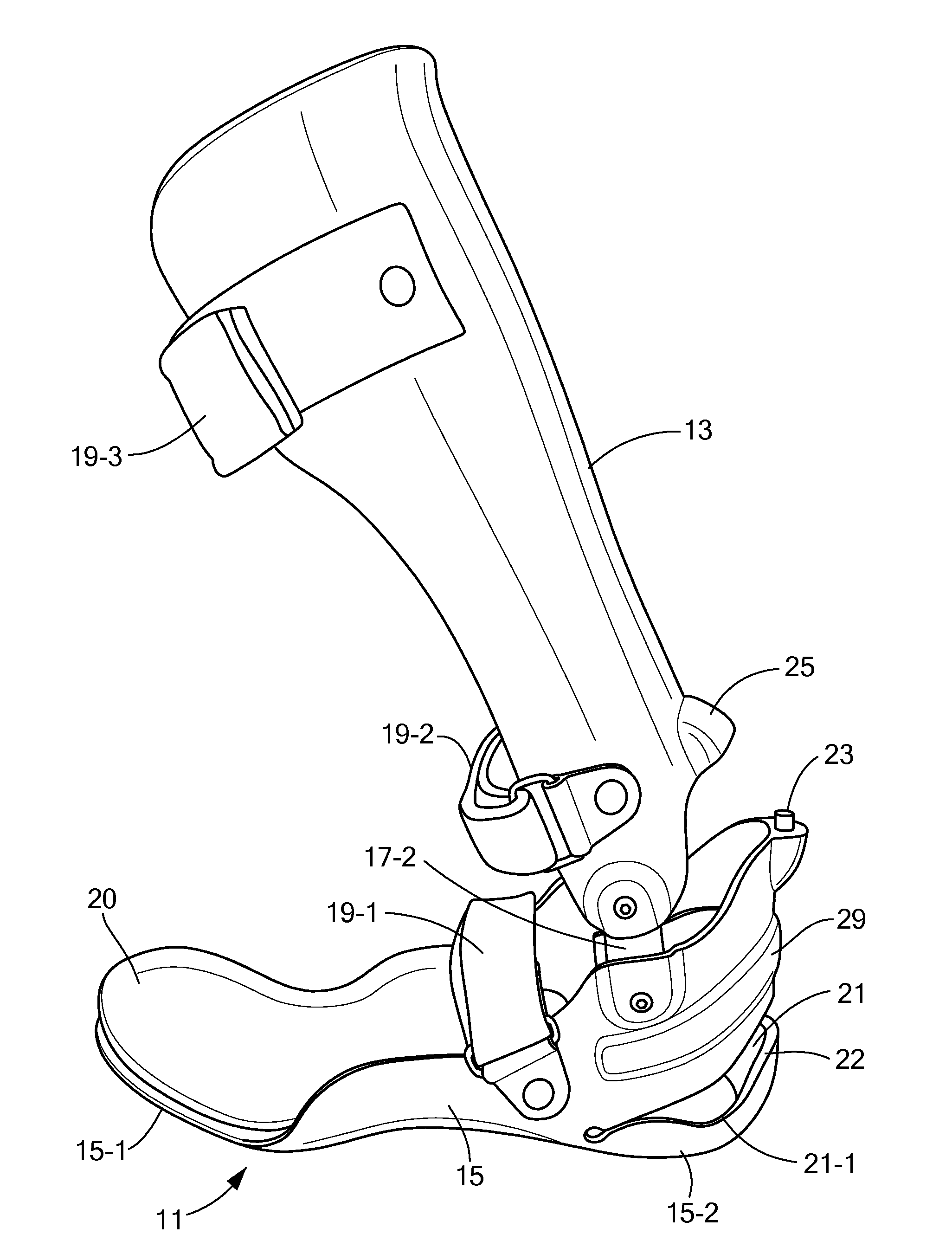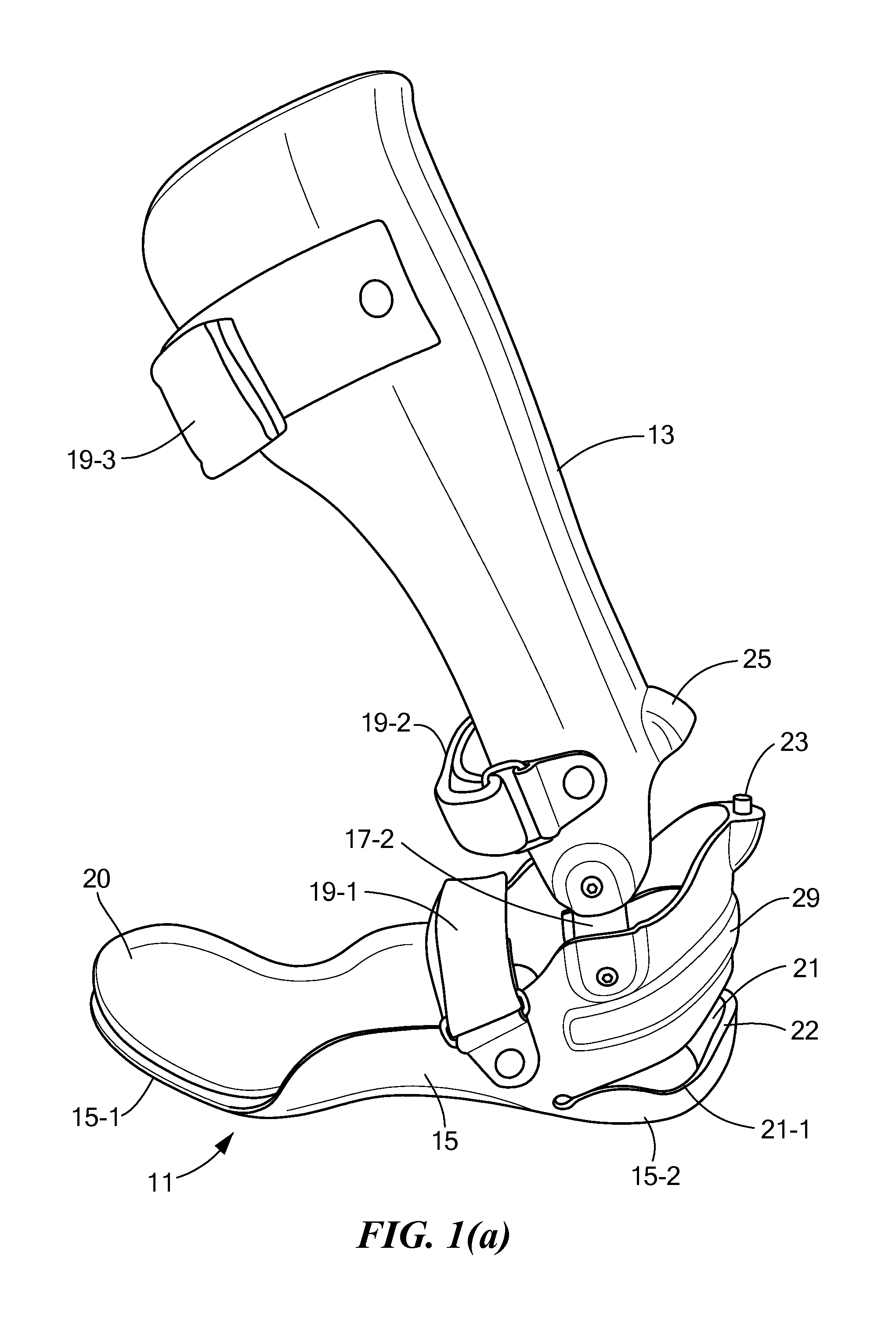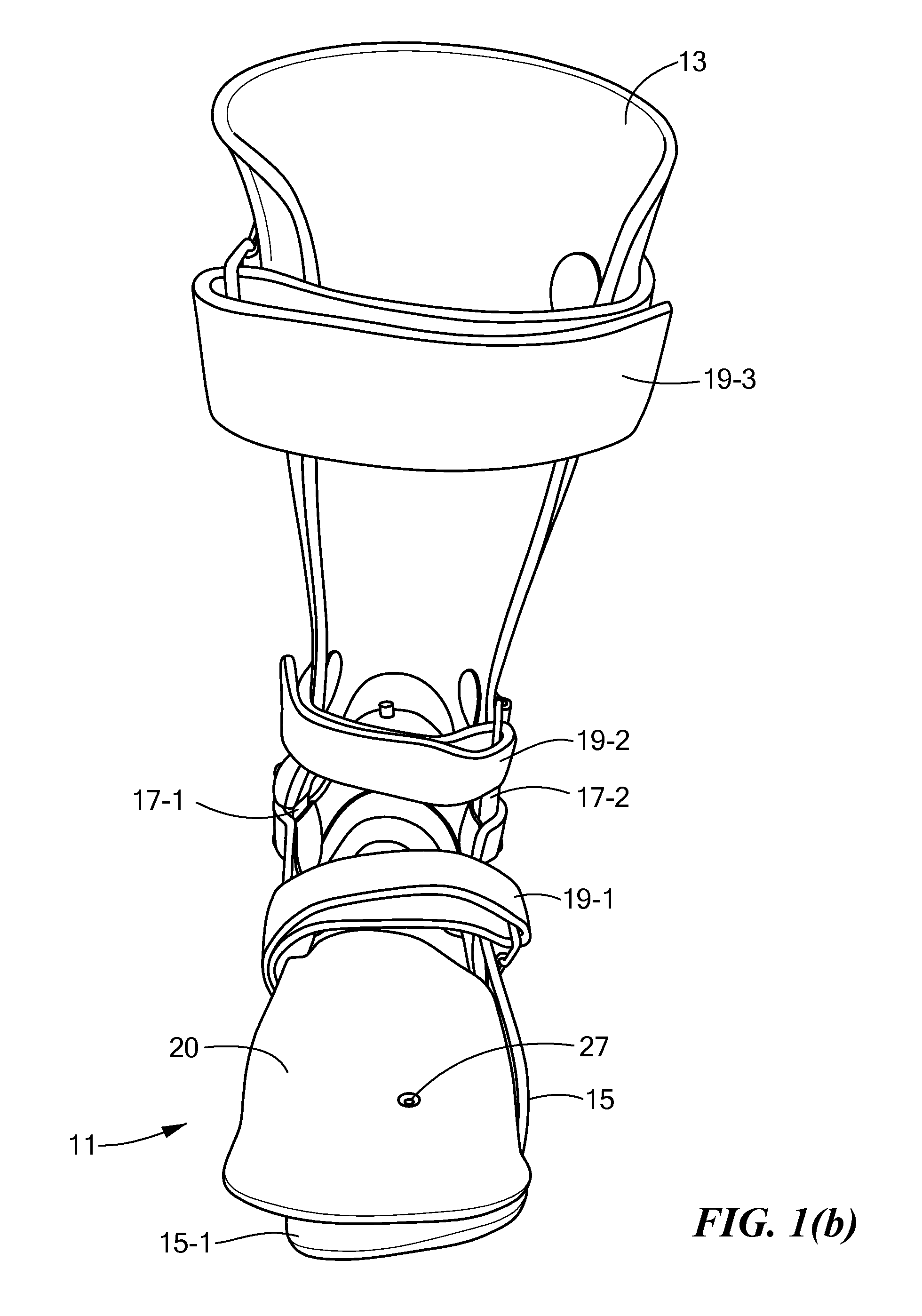Ankle-foot orthotic
an ankle and foot technology, applied in the field of orthotics, can solve the problems of reducing the comfort of patients, and creating substantial shock, or force, in the heel, etc., and achieves the effects of reducing the risk of injury, being easy to use, and being inexpensive to manufactur
- Summary
- Abstract
- Description
- Claims
- Application Information
AI Technical Summary
Benefits of technology
Problems solved by technology
Method used
Image
Examples
first embodiment
[0022]Referring now to the figures, there is a shown an ankle-foot orthotic device that is constructed according to the teachings of the present invention, the orthotic device being identified generally by reference numeral 11. As will be described in detail below, orthotic device 11 is specifically designed to influence the rockers of the foot of a patient in order to induce a relatively smooth gait and a near normal stride length, which are principal objects of the present invention.
[0023]As seen most clearly in FIGS. 1(a)-2(b), orthotic device, or orthotic, 11 comprises an upper support member 13 that is designed to conform to the posterior aspect of the tibia of a patient, a lower support member 15 that is designed to conform to a portion of the foot and ankle of the patient, a pair of opposing dorsiflexion assist members 17 that pivotally join together members 13 and 15, a plurality of straps 19 for retaining upper and lower support members 13 and 15 onto the lower extremity of...
second embodiment
[0040]For instance, referring now to FIGS. 4(a), there is shown an ankle-foot orthotic device that is constructed according to the teachings of the present invention, the orthotic device being identified generally by reference numeral 111. As can be seen device 111 is similar to device 11 in that device 111 comprises an upper support member 113 that is designed to conform to the posterior aspect of the tibia of a patient, a lower support member 115 that is designed to conform to a portion of the foot and ankle of the patient, a pair of opposing dorsiflexion assist members 117 that pivotally join together members 113 and 115, a plurality of straps 119 for retaining upper and lower support members 113 and 115 onto the lower extremity of the patient, and a removable foot overlay 120 that is mounted onto lower support member 115 to promote proper pronation into midstance.
[0041]Device 111 differs slightly from device 11 in a few notable ways. As a first distinction, device 111 includes a...
PUM
 Login to View More
Login to View More Abstract
Description
Claims
Application Information
 Login to View More
Login to View More - R&D
- Intellectual Property
- Life Sciences
- Materials
- Tech Scout
- Unparalleled Data Quality
- Higher Quality Content
- 60% Fewer Hallucinations
Browse by: Latest US Patents, China's latest patents, Technical Efficacy Thesaurus, Application Domain, Technology Topic, Popular Technical Reports.
© 2025 PatSnap. All rights reserved.Legal|Privacy policy|Modern Slavery Act Transparency Statement|Sitemap|About US| Contact US: help@patsnap.com



